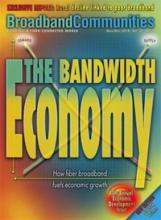New Article on Economic Development and Fiber: "The Killer App for Local Fiber Networks"
Time and again, we share economic development stories from communities that have invested in fiber networks. A new article by Jim Baller, Joanne Hovis, and Ashley Stelfox from the Coalition for Local Internet Choice (CLIC) and Masha Zager from Broadband Communities magazine examines the meaning of economic development and the connection to fiber infrastructure.
Economists, advocates, and policymakers grapple with how to scientifically measure the link between the two but:
As Graham Richard, former mayor of Fort Wayne, Ind., observed, “From the point of view of retaining and gaining jobs, I can give you example after example [of the impact of broadband]. … What I don’t have is a long term, double-blind study that says it was just broadband.” But, “as a leader, sometimes you go with your gut.”
In addition to presenting examples from a number of communities such as Chattanooga, Lafayette, and Santa Monica, the article nicely summarizes key information from recent reports on links between broadband and real estate value, household income, and local economic growth.
As the authors note:
Communities increasingly recognize that fiber networks also provide critical benefits for education, public safety, health care, transportation, energy, environmental protection, urban revitalization, government service and much more. But only in revitalizing and modernizing local economies and creating meaningful, well-paying jobs do community leaders, businesses, institutions and residents consistently find common ground. In short, economic development and job creation can fairly be called the “killer app” for local fiber networks.
Worth reading and sharing!



